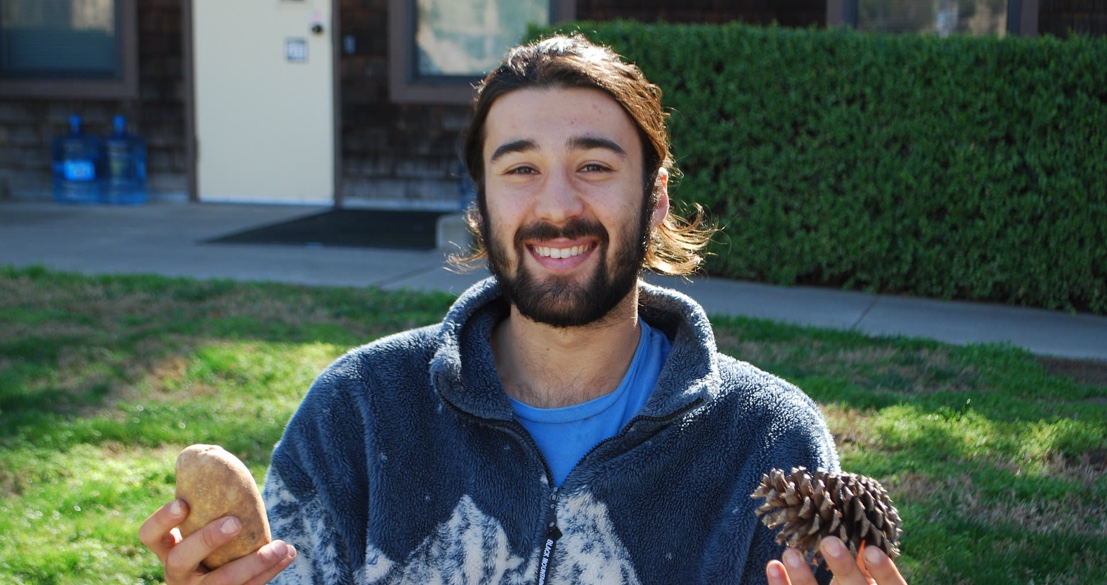Kansas City Food Scraps
Published May 12, 2016 by Jacob Siegler
My grandmother was composting before ‘sustainability’ held international weight.


Edible Landscaping Intern and Salad Bowl Garden manager Jacob Siegler teaches students and families about compost on Biodiversity Day at UC Davis. Photo credit: Melissa Cruz/Arboretum and Public Garden.
Edible Landscaping Intern and Salad Bowl Garden manager Jacob Siegler teaches students and families about compost on Biodiversity Day at UC Davis. Photo credit: Melissa Cruz/Arboretum and Public Garden.
My grandmother was composting before ‘sustainability’ held international weight. Her fascination with her Kansas City food scraps was - despite her archetypal grandma kookiness- nothing short of visionary. Her sloping, Bermuda Grass backyard was renovated with 3 raised beds in 2004, back when I, a 9 year-old tallboy, was infatuated with dirt. Back before I knew to distinguish dirt from soil, and gave onions not a second’s thought. My grandmother’s garden was the first one I met; it was a corn-belt soliloquy, iridescent in the springtime sunshine.
Food is clearly congregative. It’s a cosmic simplicity, satiating our gurgly bellies. Though, our palettes have adjusted to expect french fries over potatoes. These simple artificial transformations have split us farther from our food, consequently, farther from our soils. The complexities of today’s food system have trained us to leapfrog parts of commodity chains, making less out of more. We now anticipate the conclusive, processed versions of the same foods originating in our backyard gardens; raw has turned refined.
To enact change is no dainty feat, and a small garden is hardly enough for a head-nod of approval in our global food system. Regardless, real change is most positive when comprised of of passion-fueled, small but mighty little guys. The Salad Bowl Garden is one of those little guys, growing veggies for public consumption. Plants produced by the people for the people. 100% of what’s grown is for the taking, and the cleverly situated garden site stands valiantly as both a placeholder and a production zone. Nestled smack-dab in the PES (Plant and Environmental Sciences) courtyard, the Salad Bowl Garden is equal parts aesthetics and exposure. After all, what is an ag. school experience if swiss chard and peppers aren’t beckoning for your harvest as you leave class? The power in a garden is its direct path to the kitchen table from the soil. There is no processing or unnecessary additives. That swiss chard and those peppers are turned to salad, stuffed pies, chili pastes and stir fries. Not only does it encourage healthy eating, it exposes students to the kitchen, to turning what they can find outside into what they can fill their bodies with.
That, more than anything else, is my grandmother’s mission statement. To turn soil to sustenance, with cooking snuggled in between. To engage young and old in the collaboration that is edible spaces, and to produce, engage and enthuse the public in a movement towards playing a more congregative, cognizant and devoted role in our food system.

